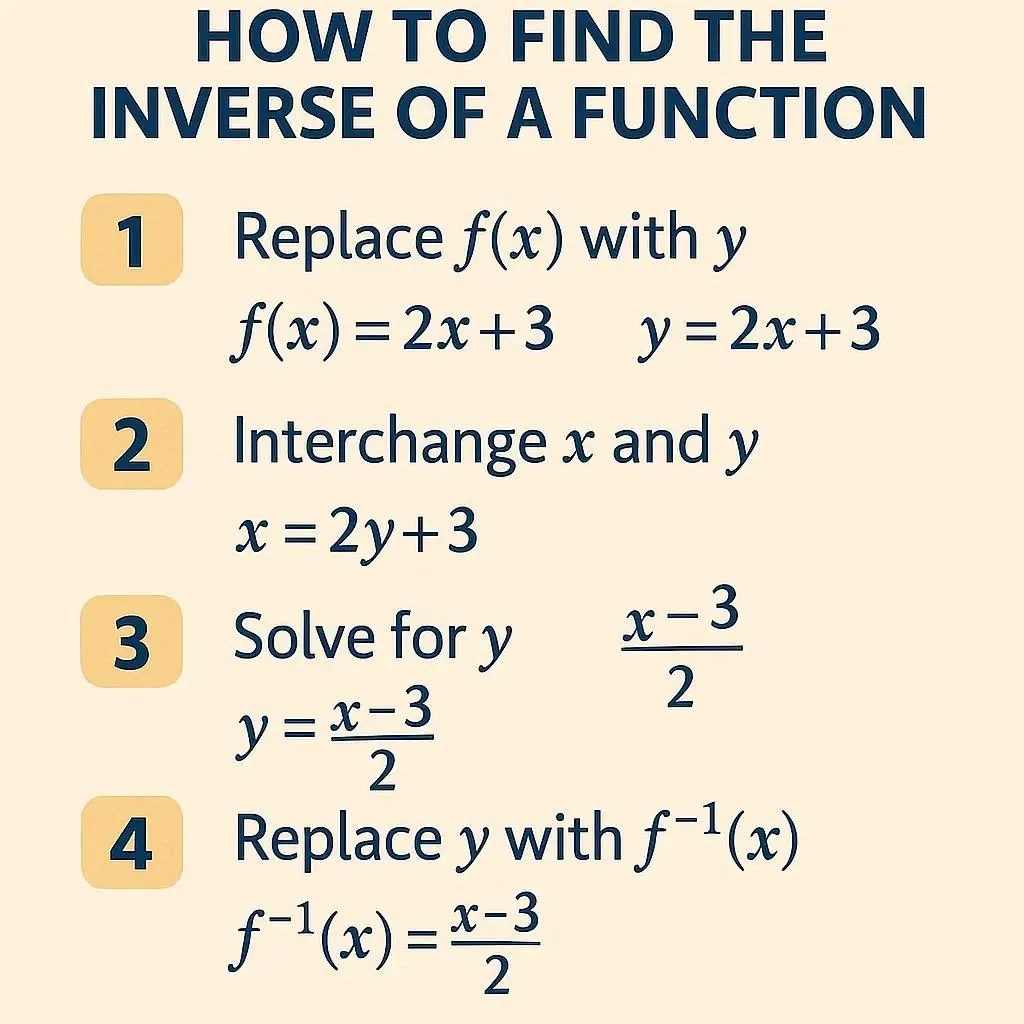What is an Inverse Function?
An inverse function is a function that "reverses" or "undoes" another function. If the original function, denoted as f(x), takes an input x and produces an output y, then its inverse function, denoted as f⁻¹(x), takes the output y and produces the original input x. Essentially, if f(a) = b, then f⁻¹(b) = a. This guide will help you understand the process of finding an inverse and the conditions under which an inverse exists.

Interactive Explorer
Select a function type to see how its inverse is calculated step-by-step.
Original Function: f(x) = 2x + 3
Visualizing the Inverse
A key property of inverse functions is that their graphs are reflections of each other across the line y = x. The chart below dynamically updates to show this relationship for the function you selected above.
Do All Functions Have an Inverse?
The "One-to-One" Condition
No, not every function has an inverse. For a function to have a well-defined inverse, it must be **"one-to-one"**. This means that every unique input value (x) must correspond to a unique output value (y), and vice versa.
The Horizontal Line Test
An easy way to check if a function is one-to-one is the **Horizontal Line Test**. If you can draw a horizontal line that intersects the function's graph at more than one point, the function is NOT one-to-one and does not have an inverse. For example, f(x) = x² fails this test, as a horizontal line can hit it twice.
Example: f(x) = x² fails the Horizontal Line Test